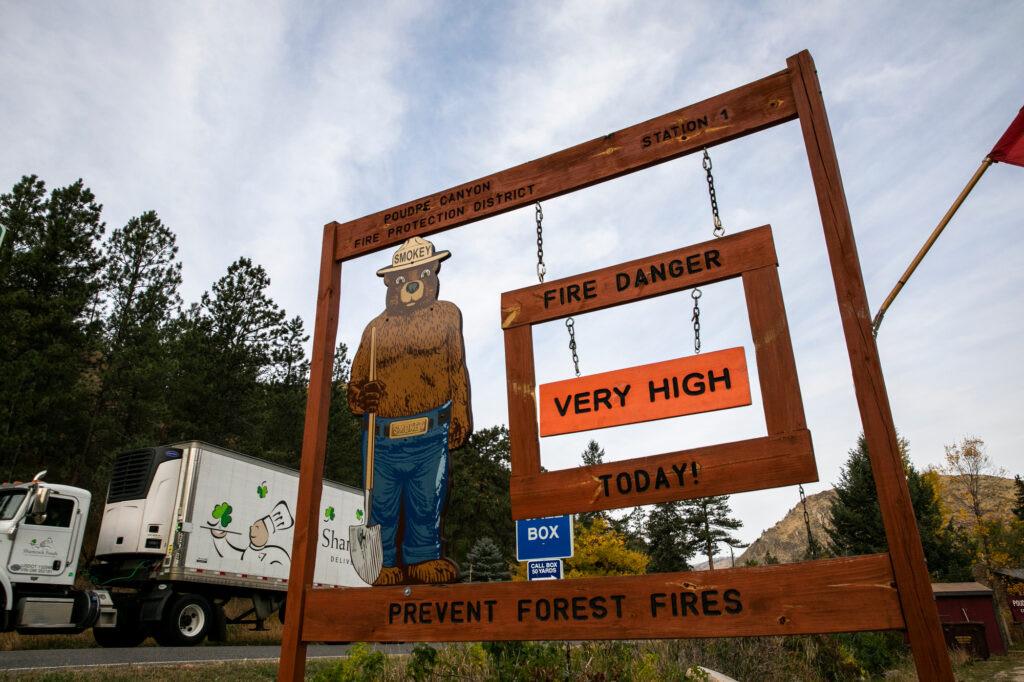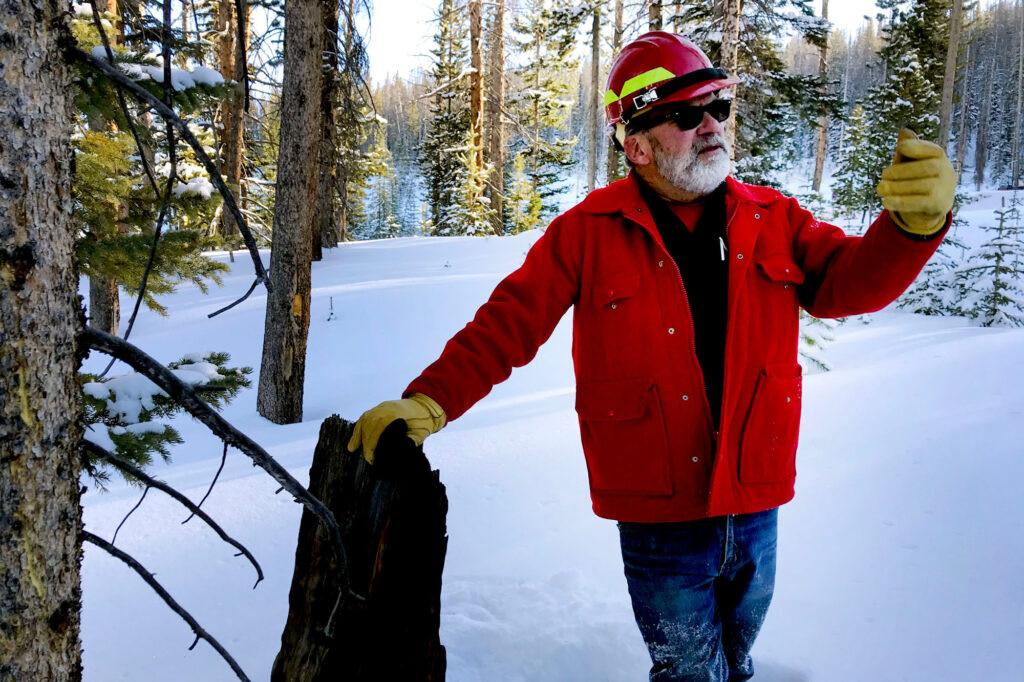
18 minute read
2020 Warmest, Driest Year in Colorado
Typical Valentine’s Day Greetings
In addition to the United States, Valentine’s Day is celebrated in Canada, Mexico, the United Kingdom, France and Australia. In Great Britain, Valentine’s Day began to be popularly celebrated around the 17th century. By the middle of the 18th, it was common for friends and lovers of all social classes to exchange small tokens of affection or handwritten notes, and by 1900 printed cards began to replace written letters due to improvements in printing technology. Ready-made cards were an easy way for people to express their emotions in a time when direct expression of one’s feelings was discouraged. Cheaper postage rates also contributed to an increase in the popularity of sending Valentine’s Day greetings.
Advertisement
Americans probably began exchanging hand-made valentines in the early 1700s. In the 1840s, Esther A. Howland began selling the first mass-produced valentines in America. Howland, known as the “Mother of the Valentine,” made elaborate creations with real lace, ribbons and colorful pictures known as “scrap.” Today, according to the Greeting Card Association, an estimated 145 million Valentine’s Day cards are sent each year, making Valentine’s Day the second largest card-sending holiday of the year (more cards are sent at Christmas). By Miguel Otárola, CPR News
High temperatures and little rainfall meant 2020 was Colorado’s second-driest and seventh-warmest year ever recorded, according to new national data released by the National Oceanic and Atmospheric Administration.
The conditions kickstarted a drought that reached every corner of the state and is likely to last through spring. Rising temperatures over the last decade also set the stage for dramatic and destructive events, including some of the largest wildfires the state had ever seen. The year was also marked by bizarre weather events, including the state’s first modern derecho in June and a swing from 100-plus degree weather to snowfall in September that tied national records. That temperature swing could be attributed to climate change, as hot conditions extended further than ever for the state.
“This year took things to a new level,” said state climatologist Russ Schumacher. “When a dry year happens, when it›s also hot, it just really puts a lot more stress on everything.” It didn’t look as though Colorado was headed in that direction at the beginning of the year. Snowfall had accumulated close to average levels throughout the winter. In Boulder, snow levels surpassed the average seasonal amount by more than 60 inches, according to assistant state



climatologist Becky Bolinger.
That run ended in April 2020 and was replaced by dry and warm weather that only worsened throughout the year. There were barely any monsoon rains in the Western Slope through the summer, Schumacher said. August was the hottest on record in the state, according to NOAA data.
A couple of strong storms rolled through Colorado during the summer, including a thunderstorm in the Eastern Plains that pushed gusts of up to 112 miles per hour, which led to widespread damage, Schumacher said.
Those storms were largely outlier events, and did little to increase Colorado’s overall precipitation levels, said Greg Hanson, the warning coordination meteorologist for the National Weather Service in Boulder.
“The climate overall for the last year was warm and dry,” said Hanson. “And yet we still had these notable storm events ... with high winds and heavy rainfall. But they›re very isolated, short-lived.”
About 12.2 inches of precipitation was recorded across Colorado in 2020, almost six inches below the average, Schumacher said. It was one of the driest years for several cities, including Denver, which received only 8.74 inches of precipitation, making it the ninthdriest year for the capital on record.
The driest year recorded for Colorado was 2002, when a scant 11.9 inches of precipitation fell across the state.
“It was more extreme on the western slope,” Schumacher said. Western Colorado also had its second-driest year on record.
The extended drought conditions exacerbated the growth of the most intense fires in the state, including the Cameron Peak and East Troublesome fires, which raged outside of the usual wildfire season.
It wasn’t just the dry and warm climate that helped spread those wildfires, but it was a major factor. Though snowpack has been lackluster so far this year, there is still plenty of winter left — along with hotter summers to come.
“It’s pretty likely that the drought is going to persist at least into the spring,” he said. “If we continue to see dry conditions, and especially if we don’t get a wet spring, then things are going to be in pretty bad shape as we get to next summer.”
North of Estes Park, smoke and ash from the nearby East Troublesome and Cameron Peak fire cover the trees, the mountains and the grass. Kevin J. Beaty/Denverite A wildfire danger sign on Highway 14 between Fort Collins and Walden in the Poudre Canyon on Thursday, Oct. 15, 2020. Hart Van Denburg/CPR News

By Michael Elizabeth Sakas/CPR News
At the end of a snowy logging trail on Gould Mountain west of Rocky Mountain National Park, a clawed machine piles up hundreds of dead lodgepole pines. The trees, killed by the notorious mountain pine beetle, will be cut down and turned into two-by-fours to reduce wildfire fuel. The Gould Crest project will remove dead trees from 328 acres of land. John Twitchell, a supervisor forester with the Colorado State Forest Service, pointed to clearings in the landscape where loggers have harvested trees. “They blend right in with the meadows, you can’t tell what’s a meadow and what isn’t,” Twitchell said. “If a fire comes ripping up this valley, A harvester operator piles dead lodgepole pine on Gould it’s going to have to stop for Mountain that’s been cut down to reduce wildfire fuel. This those openings.” project is a partnership between a private logger and the Logging is one way to reColorado State Forest Service. Dec. 30, 2020. move excess fuel since these forests don’t burn like they used to. In the 1900s, local and national land managers started to suppress fire in areas that evolved with flames.
“Lodgepole, ecologically is developed to burn,” Twitchell said. “When we live here, you know, hundred-thousand-acre fires are no longer acceptable.”
The other way to remove fuel is to bring that fire back.
Prescribed burns require permits and specific weather conditions to be done safely. The National Park Service considers it one of the most important tools for forest health and for preventing wildfire destruction.

That means burning piles of debris, and also setting fire to aces of land — a procedure known as broadcast burning. “The Colorado state forest service does not do that anymore,” Twitchell said. Burning authority In March of 2012, the Colorado State Forest Service was managing a prescribed fire southeast of Conifer. The winds picked up on a hot and dry day, which started the John Twitchell, a supervisory forester with the Colorado State Forest Service, stands on Gould Mountain next to what’s left of a tree that likely burned many years ago. He Lower North Fork Fire. It killed three people, and depoints to it as an example of how fire helps forests regen- stroyed nearly two dozen erate. Michael Elizabeth Sakas/CPR News homes. Colorado State Forester Mike Lester said the event was traumatic for many — agency staffers included.
“A lot of really good people really felt like their life’s work was tarnished in some way,” Lester said. “And it was unfair because they applied the techniques at that point in time we thought were the right ways to do it.”
The Future Of Wildfires In Colorado
When The Wilderness Meets The Urban, Homeowners And Neighbors Are On Their Own Against Wildfires
Stronger Building Codes And Other Rules Can Save Homes From Wildfires. So Why Doesn’t Colorado Have A Statewide Law Mandating Them?

Colorado’s East Troublesome Wildfire May Signal A New Era Of Big Fire Blow-ups An independent review of the fire found no individual at fault. But victims criticized the review and wanted change. A bill was passed, which ended the state forest service’s authority to do prescribed burning. The agency’s fire unit employees were moved to the Division of Fire Prevention and Control.
Lester doesn’t think that the Colorado State Forest Service needs that authority reinstated.
“We would be happy to assist, but as far as taking the lead role again, there’s no point in that because [the Division of Fire Prevention and Control] does prescribed fire.”
Courtesy of Incident Information SystemA stand of burned trees and charred ground is seen in Larimer County after the Cameron Peak fire ripped through the landscape. As of Sept. 27, 2020, the fire is the third largest in the state’s recorded history.
But the division is burning a lot less. Permit data from the state shows that Fire Prevention and Control burns about an eighth of the acreage each year that the Colorado State Forest Service once did.
Mike Morgan, the division director, said drier conditions fueled by climate change, including Colorado’s persistent drought, makes burning challenging.
“And the more homes we get in the areas where we would typically consider using fire as a tool, the more risk or hazard there is associated with using fire as a tool to do that,” Morgan said.
But federal agencies, like the U.S. Forest Service, are still conducting prescribed burns. Morgan said since the land they manage is further away from homes, it makes it easier for the federal agency to use fire as a tool. And that’s why the state has turned to more manual thinning, like the logging project on Gould Mountain.
‘You’ve taken an important tool out of the toolbox’
But former deputy state forester Joseph Duda doesn’t think that’s enough. Duda, who retired last year, wants to see the Colorado State Forest Service’s authority to burn reinstated. “You’ve taken an important tool out of the toolbox,” Duda said. “When the tool is necessary, you’ve basically tied a hand behind their back.” While Mike Morgan with fire prevention and control cites climate change and a growing number of people and developments crowding into wildland areas as reasons to do less burning, Duda sees those as the reasons to do more. CJ Pennington, a third-generation logger, stands in front “How are we better off if of a feller buncher blade at a Colorado State Forest Service we’re doing less manageforest thinning operation on Gould Mountain on Dec. 30, ment?” Duda said. “Clearly 2020. Michael Elizabeth Sakas/CPR News we’ve had warmer and drier, more drastic conditions. The time now isn’t to do less forestry, it’s to do more forestry.”
Duda said Colorado’s forest service is one of the only state forest services that can’t conduct prescribed burns. That also means the agency is not allowed to burn piles of thinned trees and brush for wildfire mitigation on private land.
“The state forest service is the forestry agency for private landowners, that’s a significant ownership. There’s six and a half million acres or so of private forest lands in Colorado,” Duda said.
While the State Forest Service is blocked from conducting prescribed fires, they haven’t stopped showing their support for its use. The agency’s latest Forest Action Plan calls for more of it in Colorado, which at this point is all the agency can do.


What’s Around the Bend
By Master Trooper Gary Cutler
I hope everyone has been enjoying the holidays this year. It’s been a hard and difficult year for a lot of people. With that being said, people don’t need anything else sad happening to them. The last thing I want for anyone is to get that knock on the door and being told a loved one has been killed in a crash.
So, this time we are going to talk about safety when it comes to curves. We have a lot of them throughout the state so I know everyone has experienced them, but a lot of us are not doing it properly.
When approaching a curve, road signs usually suggest we slow our speed. The suggested speed you should slow down to usually depends on how sharp the curve is. But don’t just rely on signage to determine your speed. There are other factors you need to look at. You should ask yourself how familiar are you with the area, how comfortable or skilled you are at driving, and what are the road conditions like.
Something I see a lot is when someone navigates a curve and they wait until they are in the curve before they apply the brakes. This is not a safe way to negotiate curves. If you need to slow, do it prior to entering the curve and release them before the curve starts. When you apply brakes in the curve you may cause the vehicle to skid.
This is particularly important during winter months. Whether you are going too fast or you brake during the curve, the area may have snow, ice, or dirt on the surface causing the car to lose traction and slide when hitting it. This can be magnified when braking around the curve.
Look at how wide the lanes are, is there a shoulder, what kind of traffic volume is on the road, is your field of view restricted. Also, don’t hug the center line. Give yourself room in case you or on-coming traffic crosses it.
Another reason for going slower around curves is the unknown. Is there an animal, cyclist, or debris on the roadway just out of sight? There could be a car going slower than you or broken down ahead of you.
There may be times when you have to use your brakes in a curve. If you do, try to gently use the brakes and try to avoid hard braking. Remember though, it’s better to have finished the braking prior to entering the curve.
As always, safe travels!

COVID-19 vaccination locations in Weld County include but may not be limited to:
Banner Health
Take the survey on the Banner Health website to determine if you are eligible to receive the vaccine. Schedule your appointment online as the Banner Health System is receiving a high number of requests for appointments.
Kaiser Permanente
For Kaiser Permanente members 70+ (and others in eligible 1A and 1B categories), visit Kaiser Permanente’s vaccine webpage to complete the “COVID-19 Vaccine Sign Up.” Upon providing your information to them, you will be placed on a first-come, first-served wait list for the vaccine based on your eligibility.
Salud
Salud is only offering COVID-19 vaccine to anyone who is 70 years of age or older and health care workers in the 1B category. You do not need to be a Salud patient. In order to register, you must meet this criteria. Register online and Salud will contact you to schedule an appointment. You must have a scheduled appointment; walk-ups are not available. At the time of your appointment, Salud will request verification of age or occupation.
SCL Health
SCL Health is currently contacting patients age 70 and older who are currently receiving care at an SCL Health facility. Information is being emailed to these patients guiding them to use the MyChart online patient portal to make a vaccination appointment. These invitations are being sent in a phased fashion based on the state tiering system. An appointment is required to receive the COVID-19 vaccine at an SCL Health facility. Walk-up vaccinations are not available. If you are 70 and older and would like more information about registering for COVID-19 vaccination at a SCL Health facility, log on to SCL Health’s website or call (303) 812-2051 for details.
Sunrise Community Health
Sunrise is offering vaccines to patients age 70 and up via vaccine clinics. For more information about dates and locations, go to the Sunrise website. Appointments are required. To make an appointment at an upcoming clinic, call (970) 346-2587 (for English or other languages) or (970) 346-2589 (for Spanish).
UCHealth
UCHealth is using My Health Connection, their online patient portal, to communicate with patients age 70 and up. If you have a My Health Connection account, you are added to the vaccine list and will automatically receive updates (via email and in the app) regarding the vaccine. If you do not have a My Health Connection account or are new to UCHealth, create a My Health Connection account to be placed on the list to receive the COVID-19 vaccine when it is available for your phase, according to the state’s plan. An appointment is required to receive the COVID-19 vaccine. Walk-ins cannot be accommodated.
Weld County Department of Public Health and Environment
Weld County Health is currently contacting eligible individuals in some of the 1B category to obtain a vaccination. As of January 8, the Health Department is not able to provide vaccines to county residents who are 70 or older.


Keene Craft Mercantile
A Special Place Where Talented People Bring Their Home-made Crafts to Sell

We are open Monday through Saturday from 10 am until 5 pm

Wild Geese Over the Desert From sunset, slowly fading To misted beryl and blue Streaked with the melted topaz, The goose-wedge comes in view The boughs of twisted cedars On the ledges darkly sway, Making a futile gesture To rise and fly away. Nothing will have beginning And nothing end in me, Fort watching the geese fly over, That anyone may see. Only my heart makes gesture Of lifting wings to go, Like boughs of the twisted cedars Dark on fading glow. Glenn Ward Dresbach
Here we are in the second week of the New Year. Hope everyone has plans for great new beginnings. Peace and Blessing to all.
Smile a little: Metal age-We live in the Metal age: Silver in the hair.
Gold in the teeth. Lead in the pants. Iron in the veins.
The New Year came in calm for all reports. We have new beginning and adventures to look forward too.
It was an fun week at the home of Gertie Chapin with a visit by Carlee Bolthouse, Kane, Palmer and Kensington and Leianne Stinton from Sherwood Oregon. They enjoyed visiting with family and friends in the Valley. They also visit Brush with Marilyn Stinton.
Church Chat: The St. Francis of Assisi Catholic Church will celebrate Mass on Sunday morning at 7:00 a.m. Pastor Reverend Erik Vigil Reyes and Parochial Vicar Reverend Francis Saleth, HGN will share the services. Confession will be celebrated before mass.
Weldon Valley Presbyterian Church in Goodrich has Christian education and worship at 10 a.m. each Sunday.
Contact information for Pastor Denise Shannon is 720-271-6733 or pastordeniseshannon@gmail.com. The Presbyterian Women are furnishing a meal for Rising Up on the first Thursday of the month through March.
The Presbyterian Women will meet on Thursday, for Bible Study.
School Scoop: The first week back in the week year went well for all. 4-H News: 4-H members preparing for a new year.
What’s cookin’: Hamburger-Vegetable Soup: 1 pound ground beef, 1 cup diced onion, 1 cup sliced carrots, 1 cup cut in pieced celery, 4 cups cooked tomatoes, ( canned from store good), ½ cup rice, 3 cups water, ¼ teaspoons basil, 1/4 tablespoon thyme, 1 bay leaf, salt as needed. Brown the ground beef and onion. When browned drain off excess fat. Combining with remaining ingredients in a large kettle. Simmer for at least one hour. Ready to serve. This is an easy recipe. Freezes well. The rice will make the soup thick, may want to reduce or add more water of tomato juice. Enjoy, this is soup season!
First facts: 1542-Portuguese navigator Juan Rodirguez Cabrillo arrived at present day San Diego.
Weldon Valley History: 2002 All-School Reunion- Over 200 Alumni and guests gathered for an all-school. This was the fourth reunion in the past 20 years sponsored by the Weldon Valley alumni Association. The event began in the after- noon with a social reception at the school. Yearbooks were on display. The Alumni took the building as many changes had been. The evening activities took place in Fort Morgan at the County Steak Out Restaurant. Alumni were present from years: 1938-1958,1962-1963,19651985,1988-1990,1992-1994,1996-2001. The class of 2002 broke the record of the Class of 1940 which had 21 members present; 2002 class had 23 graduates in attendance. It was a great evening for all.
Calendar of Event: Thursday, January 14, 1:30 p.m., Presbyterian Women Bible Study in Goodrich at the church.
Thought for the day: I know of no pursuit in which more real and important services can be rendered to any country that by improving its agriculture, its breed of useful animals, and other branches of husbandman’s care.”
George Washington,
65 Main Street, Keenesburg, Colorado 303-910-0640




“Reagan was optimistic about America amid the cynicism and general retreat of the post-Vietnam era because he believed unfashionably that America was both great and good -- and had been needlessly diminished by restrictive economic policies and timid foreign policies. Change the policies and America would be restored, both at home and abroad. He was right.” – Charles Krauthammer (1950-2018) writing in the Washington Post on June 11, 2004.









